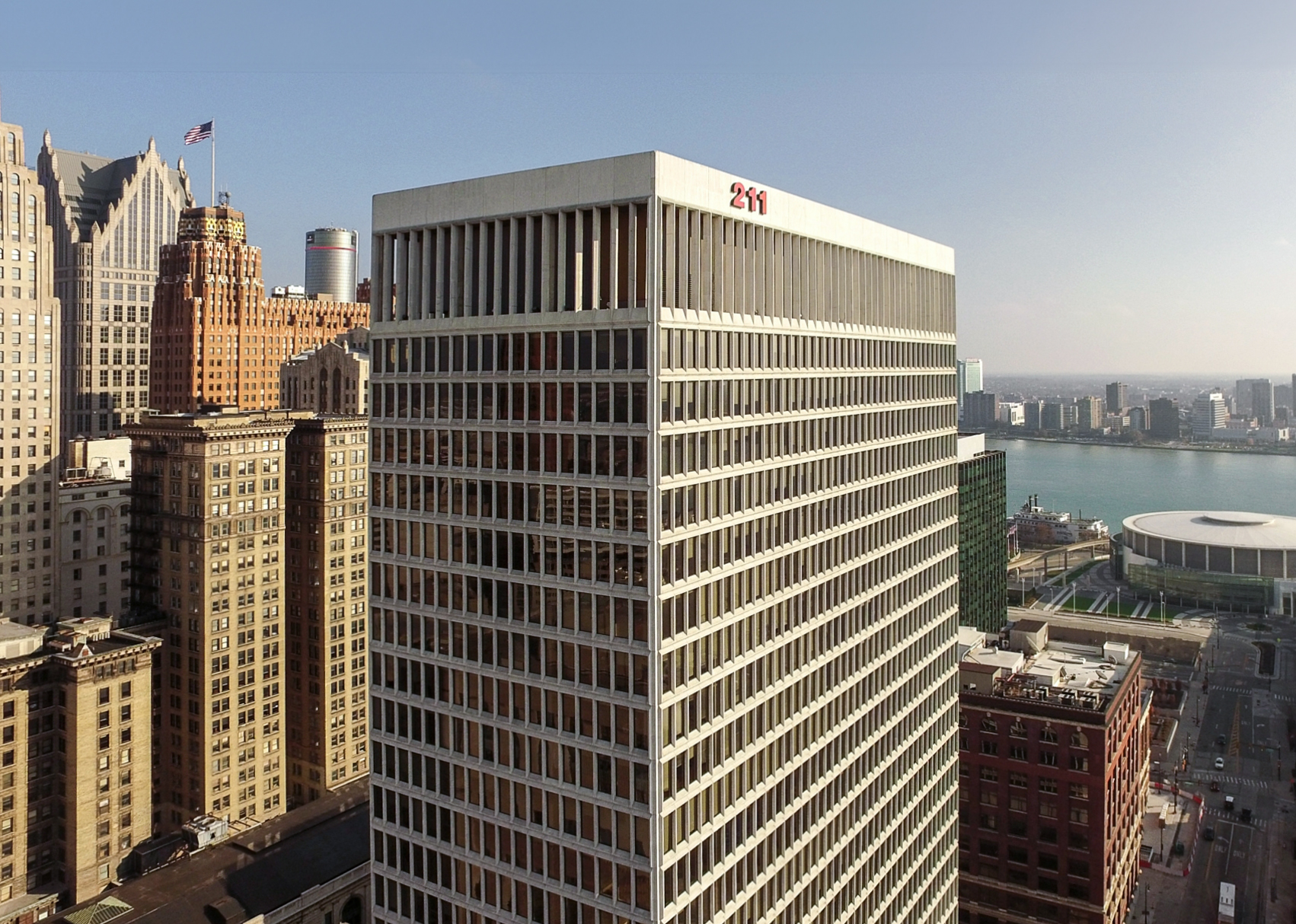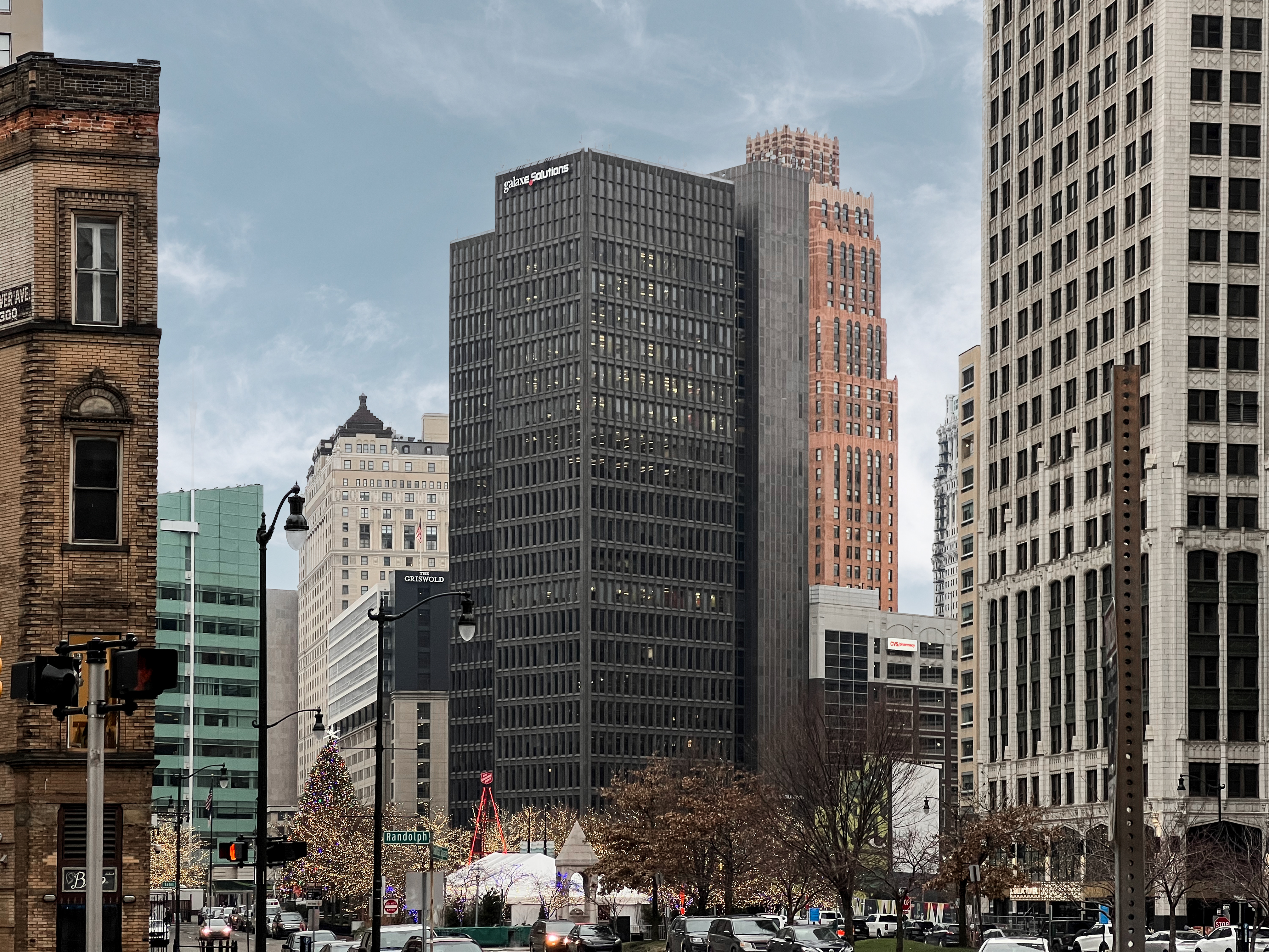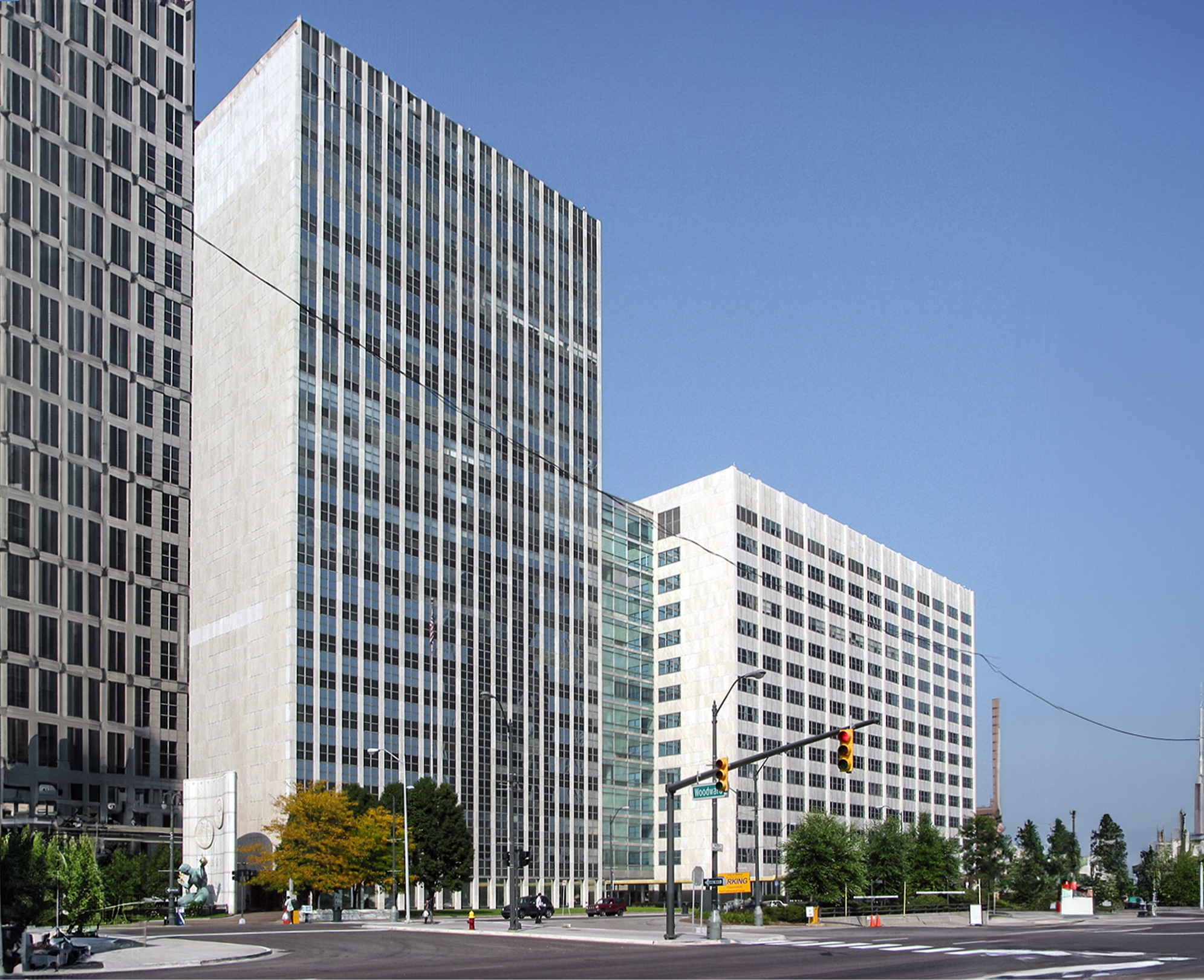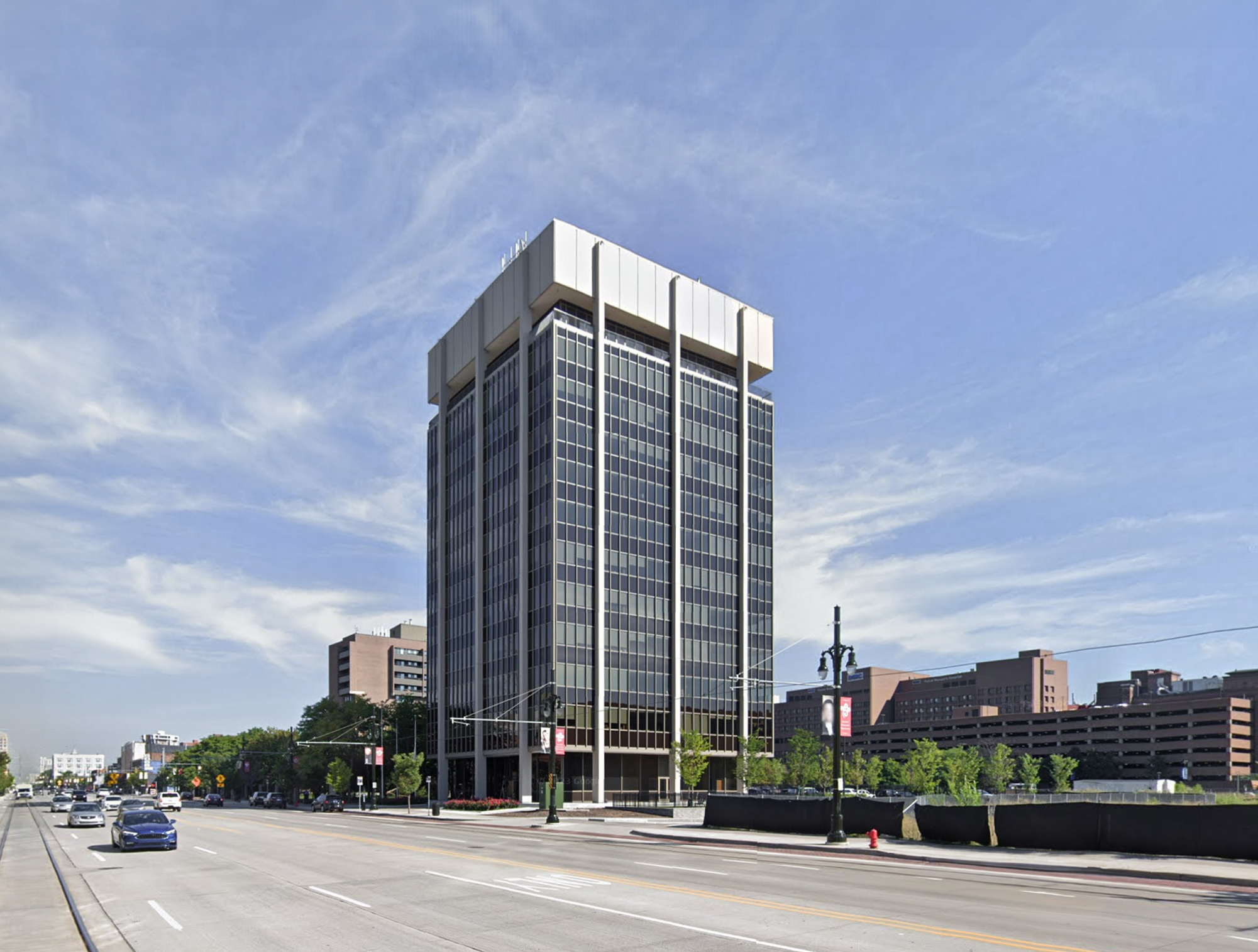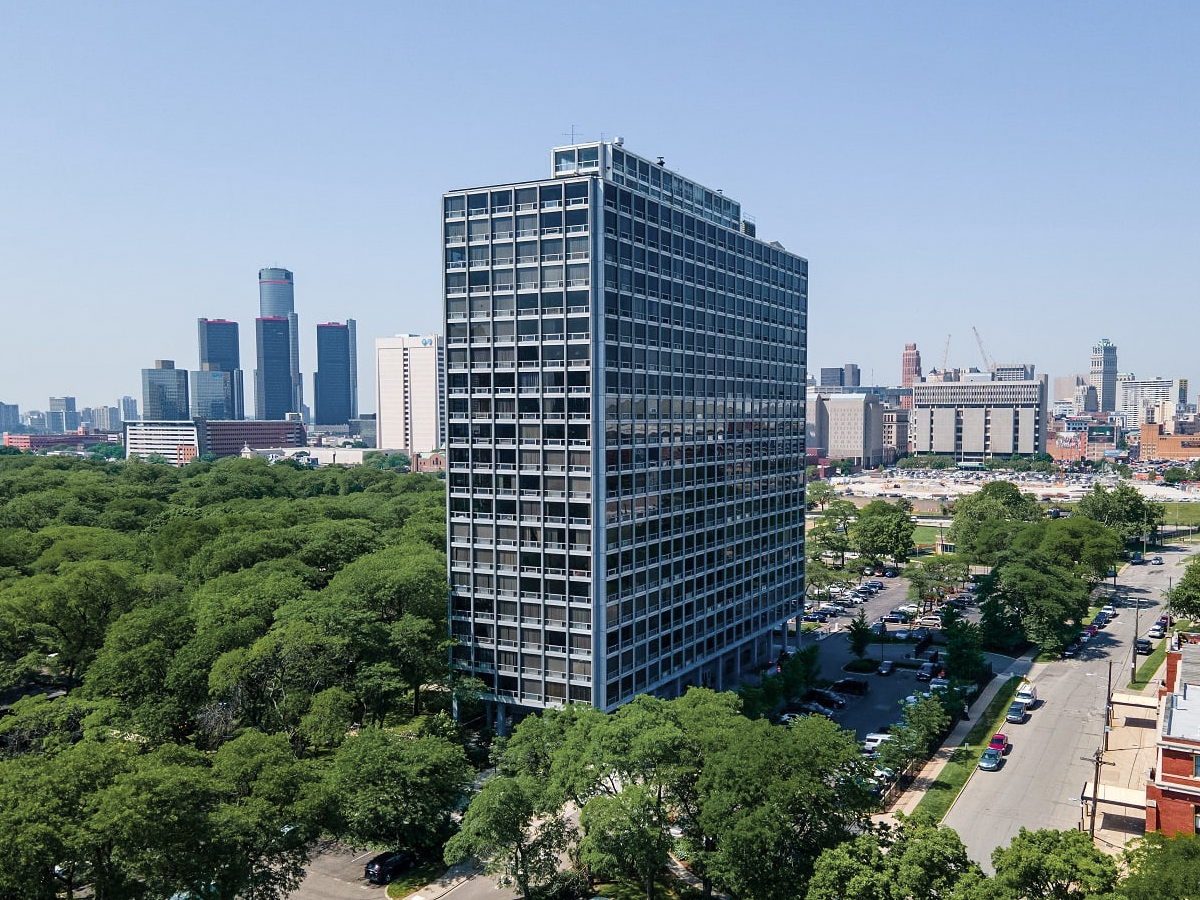The 211 West Fort Street is an International Style skyscraper designed by Harley, Ellington, Cowin & Stirton, and built between 1961 and 1963 in Detroit, MI.
211 West Fort Street is not the only name you might know this building by though. It is common for companies to want to attach their names to iconic buildings when they move in, or for the general public to come up with nicknames, and this one is no exception. The 211 West Fort Street is also known, or has been known as, Comerica Building , or Detroit Bank & Trust Building.
Its precise street address is 211 West Fort Street, Detroit, MI. You can also find it on the map here.
The 8th and 27th levels are reserved as mechanical floors, with the 27th floor also serving as a cooling tower. At night, these two floors illuminate, and have become a landmark of the city's skyline .
